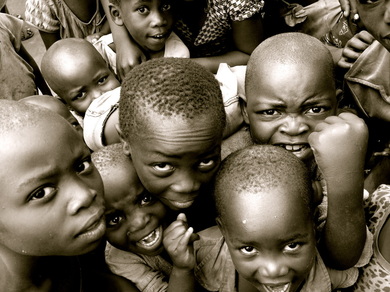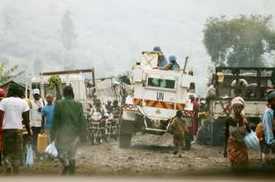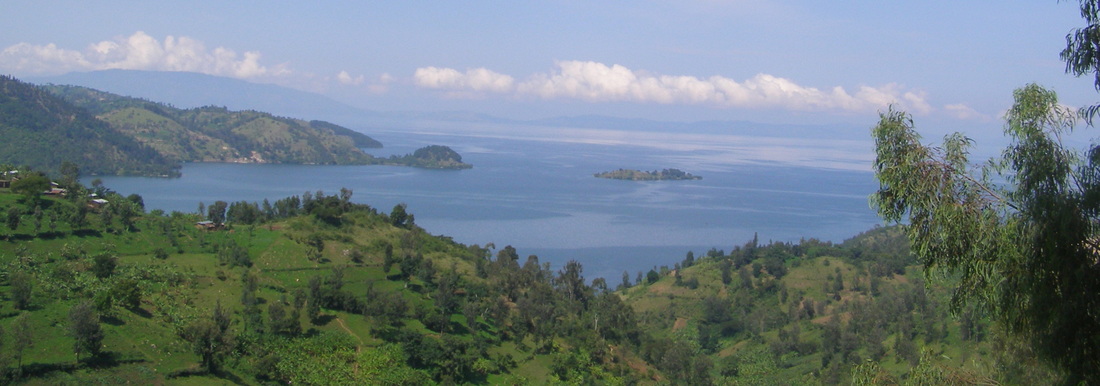
My inspiration for this "love where it hurts" blog has come significantly from a man named Dr. Cornel West: a present day civil rights activist, a well spoken philosopher, and a man of serious conviction for what is true, beautiful and good in the world He said, "Justice is love on legs, spilling over into the public sphere... And since Justice is what love looks like in public, you can’t talk about loving folk and not fighting for justice, especially beginning with the least of these.” Justice is where non-love, hate and indifference, is countered with love, compassion and active concern. And so the blog I suppose is a way for me primarily for my own memory to chronicle and journal what I’m learning in the midst my feeblest, certainly infrequent, and often quite poorly executed attempts to love in public for justice in places and for people that have been battered by the wiles and evils of this world: in Congo, India, Los Angeles, hospitals, my family, my friends, and in myself.
I'm amazed though how quickly and easily I abandon this ideal and retreat into my comfy little world of self sufficiency and dependence, where I don't consider others and care for little more than my own happiness. And, ironically its here where I usually find myself most miserable. In my arrogance I think that having a dependence on other people is a lesser thing, or in my ignorance I believe that I am the reason for the good in my life; I couldn't be further from the truth. I claim that I want to help to change others’ lives, yet believe that I am the only one to change my own for the better. I suppose this is the definition of hypocrisy. Never the less, not getting something right is no excuse for not trying again or continuing to attempt; and the nature of growing and maturing is that you are not already ‘there,’ the finished product, and allowing grace for oneself and those around you walk that journey well.
When I was in the DR Congo one of the pastors/translators we were with said something very simple yet significantly profound that I'm wanting to practice. We had just finished a health seminar in the village where I was teaching on Nutrition and he said, "You know Kyle in the same way that we must put good food into our body every day so it can work well, we must read and learn to feed our minds, and pray and love others to feed our spirits, or else as a whole person we will be unhealthy and die." Perhaps in its simplicity it actually got through the chaos of my brain and just. made. sense.
I've been reflecting on the act of breathing as of late. Without it a person will die in minutes. In medical jargon the act of breathing out is called expiration and the act of breathing in is called inspiration; and we’re all familiar with it’s definition in the abstract sense.
World English Dictionary
inspiration (ˌɪnspɪˈreɪʃən)
— n
1 stimulation or arousal of the mind, feelings, etc, to special or unusual activity or creativity
2 the state or quality of being so stimulated or aroused
3 someone or something that causes this state
4 an idea or action resulting from such a state
5 the act or process of inhaling; breathing in
I’d like to think there is a rather significant correlation between these definitions. Inspiration is both an act (5) and a result or outcome (1). Both a breathing in and an awakening or arousal of something truly sensational. Yet both require a type of humility. To breathe is to say that without this external oxygen I will die, and so I inhale to live. Likewise to be inspired is to say that I as a person have not arrived, I am not complete, I am not perfect, and I have not yet fully lived. And so to be inspired one must inspire. We must breathe into our person beauty, truth, wisdom, love, and so be changed by and transformed into those things. Sometimes, and I believe in the most surprising and joyous of occasions, we breathe in these things by accident and our world is changed. But we also can choose to seek out and purposefully breathe in these things which can change ours and the world around us. (Certainly there is room to be inspired by and towards unimaginably horrible things as well, but that is for another time.)
And so I breathe, not just to live, but to come alive; not just to sustain life, but to thrive in it.
I'm amazed though how quickly and easily I abandon this ideal and retreat into my comfy little world of self sufficiency and dependence, where I don't consider others and care for little more than my own happiness. And, ironically its here where I usually find myself most miserable. In my arrogance I think that having a dependence on other people is a lesser thing, or in my ignorance I believe that I am the reason for the good in my life; I couldn't be further from the truth. I claim that I want to help to change others’ lives, yet believe that I am the only one to change my own for the better. I suppose this is the definition of hypocrisy. Never the less, not getting something right is no excuse for not trying again or continuing to attempt; and the nature of growing and maturing is that you are not already ‘there,’ the finished product, and allowing grace for oneself and those around you walk that journey well.
When I was in the DR Congo one of the pastors/translators we were with said something very simple yet significantly profound that I'm wanting to practice. We had just finished a health seminar in the village where I was teaching on Nutrition and he said, "You know Kyle in the same way that we must put good food into our body every day so it can work well, we must read and learn to feed our minds, and pray and love others to feed our spirits, or else as a whole person we will be unhealthy and die." Perhaps in its simplicity it actually got through the chaos of my brain and just. made. sense.
I've been reflecting on the act of breathing as of late. Without it a person will die in minutes. In medical jargon the act of breathing out is called expiration and the act of breathing in is called inspiration; and we’re all familiar with it’s definition in the abstract sense.
World English Dictionary
inspiration (ˌɪnspɪˈreɪʃən)
— n
1 stimulation or arousal of the mind, feelings, etc, to special or unusual activity or creativity
2 the state or quality of being so stimulated or aroused
3 someone or something that causes this state
4 an idea or action resulting from such a state
5 the act or process of inhaling; breathing in
I’d like to think there is a rather significant correlation between these definitions. Inspiration is both an act (5) and a result or outcome (1). Both a breathing in and an awakening or arousal of something truly sensational. Yet both require a type of humility. To breathe is to say that without this external oxygen I will die, and so I inhale to live. Likewise to be inspired is to say that I as a person have not arrived, I am not complete, I am not perfect, and I have not yet fully lived. And so to be inspired one must inspire. We must breathe into our person beauty, truth, wisdom, love, and so be changed by and transformed into those things. Sometimes, and I believe in the most surprising and joyous of occasions, we breathe in these things by accident and our world is changed. But we also can choose to seek out and purposefully breathe in these things which can change ours and the world around us. (Certainly there is room to be inspired by and towards unimaginably horrible things as well, but that is for another time.)
And so I breathe, not just to live, but to come alive; not just to sustain life, but to thrive in it.


 RSS Feed
RSS Feed